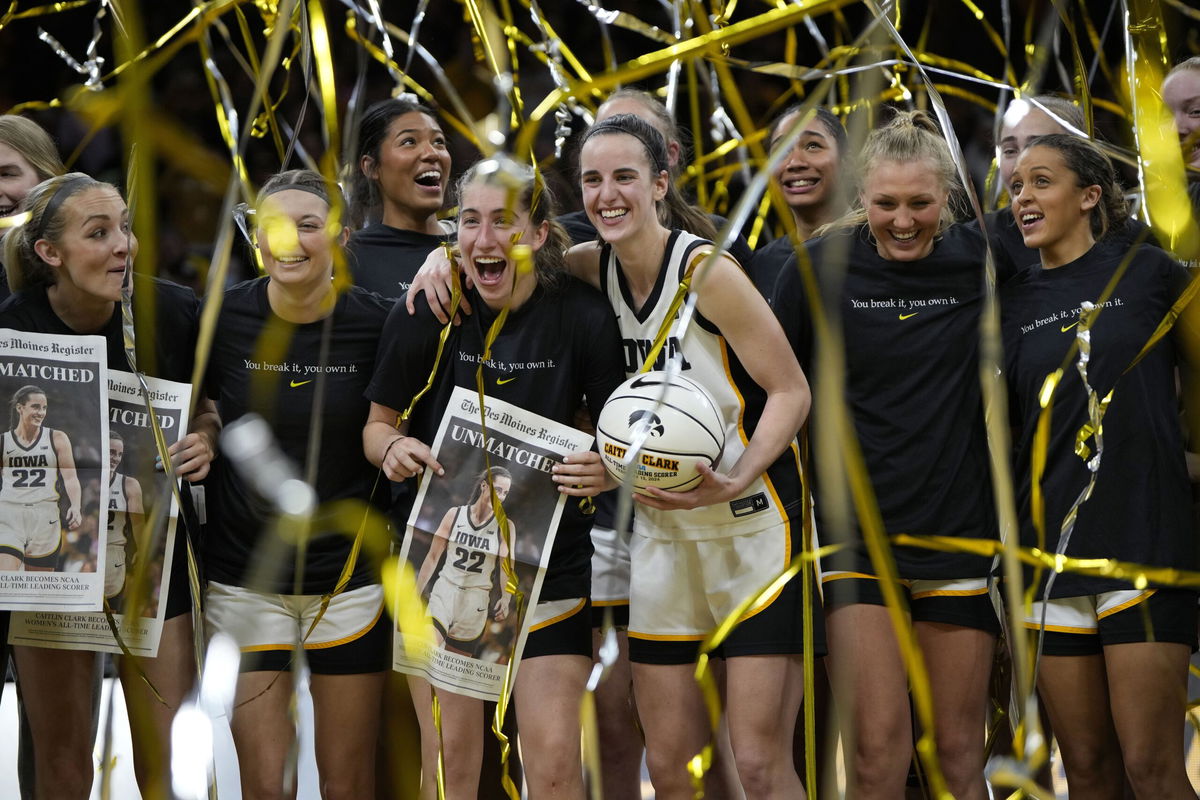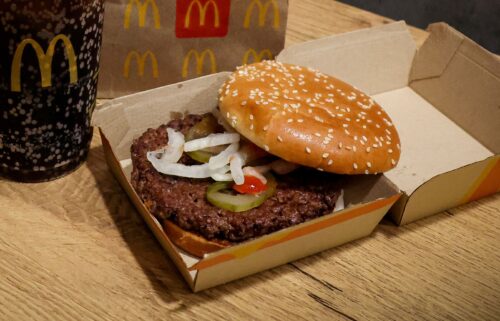Caitlin Clark-onomics and the new era of profitability in college sports

Caitlin Clark has locked in lucrative sponsorships while making history on the court.
By Clare Duffy and Allison Morrow, CNN
New York (CNN) — Caitlin Clark made history Thursday as women’s college basketball’s all-time leading scorer. The Iowa star is also an economic powerhouse, putting a spotlight on the multi-million dollar earning potential of some athletes in a new era of profitability in college sports.
Clark, 22, has signed deals with Gatorade, Nike and State Farm, among others. Sports data site On3 estimates the total value of those partnerships at $818,000 — the fifth-highest ranking in all of women’s college sports, and multiples higher than Clark can expect to make as a pro in the WNBA, where the top salary currently maxes out around $250,000.
Her star power is also filling seats, boosting TV ratings and moving merchandise.
Clark’s stardom reflects women’s growing marketing power in college sports, three years after a Supreme Court ruling allowed student athletes to make money off their personal brand and amid booming interest in women’s sports broadly. Brands are increasingly hungry to partner with college athletes who can help them reach younger consumers, especially young women who are most likely to cultivate loyal social media followings. And the growing profiles of top athletes like Clark are helping to bring more attention — and more revenue — to women’s college sports programs and professional leagues.
“Corporate America obviously wants to target younger people, and part of that is the lifetime customer value,” said Patrick Rishe, director of the sports business program at Washington University in St. Louis. He added that Clark herself has a following of “Clarkies.”
“These preteen and teenage girls that are huge fans of Caitlin Clark’s, they’re watching the commercials and they see her drinking Gatorade and they see her on a State Farm commercial,” Rishe said. “We don’t know if that brand recognition and reinforced messaging is going to lead to those young girls eventually becoming State Farm customers … but that’s the hope.”
Until recently, college athletes were not allowed to be paid. But a 2021 Supreme Court ruling allowed student athletes to make money off their personal brand — their name, image and likeness, known as NIL.
The total market for commercial NIL deals for college athletes is expected to reach an estimated $200 million in 2024, according to Opendorse, an online platform that helps connect athletes with NIL deals. And for top athletes like Clark, multi-year deals with major brands are likely “starting in the six figures,” Sam Weber, head of marketing and communications at Opendorse, told CNN.
Representatives for Clark did not immediately respond to CNN’s request for comment.
The NIL change is especially empowering for female athletes, whose post-college professional path — if it exists at all — is far less lucrative than men’s.
That’s particularly visible in basketball. Currently, LSU stars Angel Reese and Flau’jae Johnson boast NIL valuations above $1 million, according to On3’s NIL ranking. Their prospects in the professional league — where the average salary in 2023 was around $113,000, according to Spotrac — are meager by comparison. (By contrast, even professional men’s basketball players ranked below the top 100 athletes in the NBA can make upwards of $10 million each year.)
Top brands in particular may be eager to ink endorsement deals with pro-bound college athletes that can last the entirety of their careers, Weber said. He cited similar, long-term relationships Nike has had with athletes like golfer Tiger Woods, who began his 27-year relationship with the brand at age 20, and basketball star LeBron James, who signed with the shoe company, in what eventually became a lifetime deal, as a high school senior.
“Large brands and massive media agencies, what they see [in a player like Clark], that doesn’t go away when she puts on a WNBA jersey,” Weber said.
The growing public profiles of college athletes has also meant additional funds for their schools and athletics programs.
Season tickets for the Iowa Hawkeyes women’s basketball team sold out this year for the first time in the program’s history. Ahead of Thursday’s pivotal game in Iowa City against the Michigan Wolverines, tickets prices were averaging $400 a seat, about 206% more expensive than the same game in November, according to TickPick.
For Iowa’s March 3 home game against No. 2-ranked Ohio State, ticket prices were already topping $450 for the cheapest seat on StubHub on Friday, maxing out above $1,000.
TickPick estimates the game will be the most expensive in women’s college basketball history.
This past Sunday, Nebraska’s victory over Iowa in Lincoln attracted 1.7 million viewers — the most-watched women’s college basketball game ever on Fox Sports.
“There’s no question that name, image and likeness may be one of the largest reasons why we’ve seen such an acceleration in the growth of women’s sports and the business of women’s sports,” Rishe said. Women college athletes “now have the ability to build a brand for themselves, such that when they graduate, they can further monetize the image that they’ve crafted. And it also helps these women’s sports leagues because now you’ve got college stars joining professional leagues that now have a bigger aura, a greater recognition, than they ever had before.”
The-CNN-Wire
™ & © 2024 Cable News Network, Inc., a Warner Bros. Discovery Company. All rights reserved.

